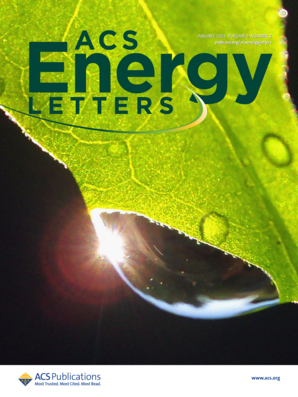解读牺牲剂在光催化H2O2生产中有争议的作用:促进剂还是人工制品的来源?
IF 19.3
1区 材料科学
Q1 CHEMISTRY, PHYSICAL
引用次数: 0
摘要
光催化H2O2合成对可持续生产H2O2具有很大的前景。虽然人们一直致力于优化催化剂和反应条件以提高H2O2的产率,但H2O2定量的准确性(可靠性能评估的基本先决条件)仍未得到充分探讨。由于有机牺牲剂固有的氧化还原活性和光学吸收特性,传统的比色法可能受到广泛使用的损害。在此,我们系统地研究了几种常用牺牲剂及其氧化产物对H2O2定量测定的干扰效应。我们的研究结果表明,定量不准确是由多种因素引起的,包括预先存在的H2O2污染、光谱重叠、意外的氧化还原反应和自敏效应。根据这些发现,我们提出了选择相容牺牲剂、检测方法和激发波长的实用指南,以最大限度地减少分析伪影,并能够准确评估光催化H2O2的产生。本文章由计算机程序翻译,如有差异,请以英文原文为准。

Deciphering the Controversial Role of Sacrificial Agents in Photocatalytic H2O2 Production: Promoters or Source of Artifacts?
Photocatalytic H2O2 synthesis holds great promise for sustainable H2O2 production. While extensive efforts have focused on optimizing catalysts and reaction conditions to enhance H2O2 yields, the accuracy of H2O2 quantification─a fundamental prerequisite for reliable performance evaluation─remains underexplored. Conventional colorimetric methods can be compromised by the widespread use of organic sacrificial agents due to their intrinsic redox activity and optical absorption properties. Herein, we systematically investigate the interference effects of common sacrificial agents and their oxidation products on H2O2 quantification across several established colorimetric assays. Our results reveal that quantification inaccuracies arise from a combination of factors, including pre-existing H2O2 contamination, spectral overlap, unintended redox reactions, and self-sensitization effects. Drawing from these findings, we propose practical guidelines for selecting compatible sacrificial agents, detection methods, and excitation wavelengths to minimize analytical artifacts and enable accurate evaluation of photocatalytic H2O2 production.
求助全文
通过发布文献求助,成功后即可免费获取论文全文。
去求助
来源期刊

ACS Energy Letters
Energy-Renewable Energy, Sustainability and the Environment
CiteScore
31.20
自引率
5.00%
发文量
469
审稿时长
1 months
期刊介绍:
ACS Energy Letters is a monthly journal that publishes papers reporting new scientific advances in energy research. The journal focuses on topics that are of interest to scientists working in the fundamental and applied sciences. Rapid publication is a central criterion for acceptance, and the journal is known for its quick publication times, with an average of 4-6 weeks from submission to web publication in As Soon As Publishable format.
ACS Energy Letters is ranked as the number one journal in the Web of Science Electrochemistry category. It also ranks within the top 10 journals for Physical Chemistry, Energy & Fuels, and Nanoscience & Nanotechnology.
The journal offers several types of articles, including Letters, Energy Express, Perspectives, Reviews, Editorials, Viewpoints and Energy Focus. Additionally, authors have the option to submit videos that summarize or support the information presented in a Perspective or Review article, which can be highlighted on the journal's website. ACS Energy Letters is abstracted and indexed in Chemical Abstracts Service/SciFinder, EBSCO-summon, PubMed, Web of Science, Scopus and Portico.
 求助内容:
求助内容: 应助结果提醒方式:
应助结果提醒方式:


